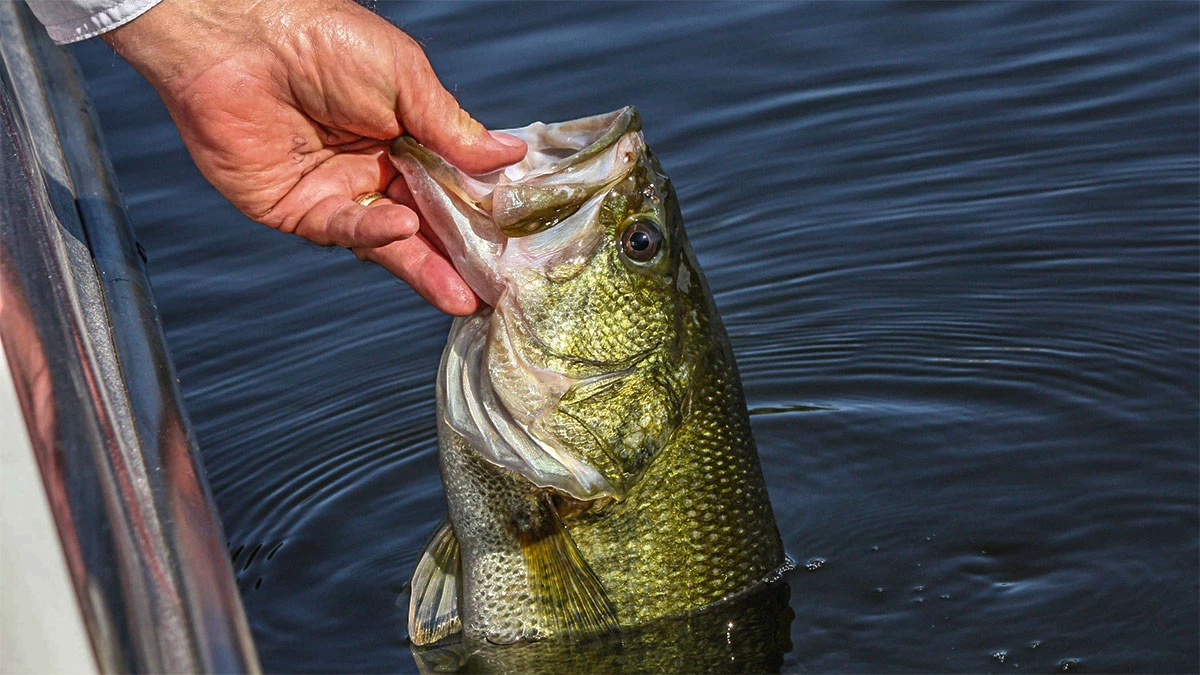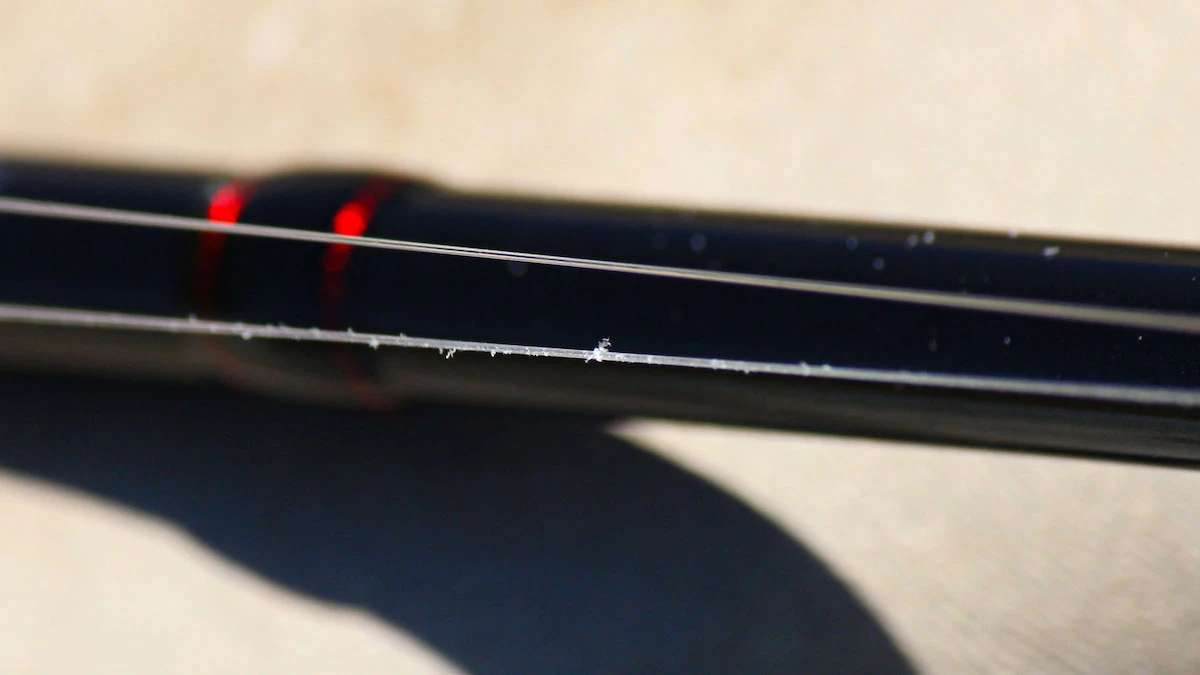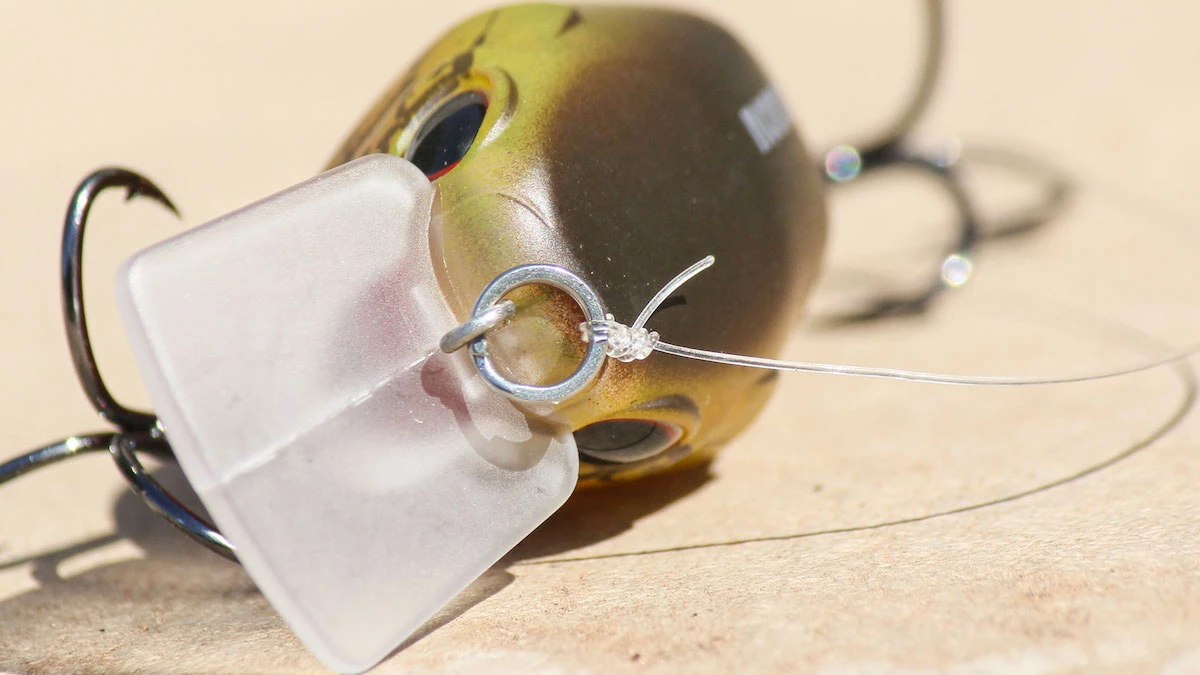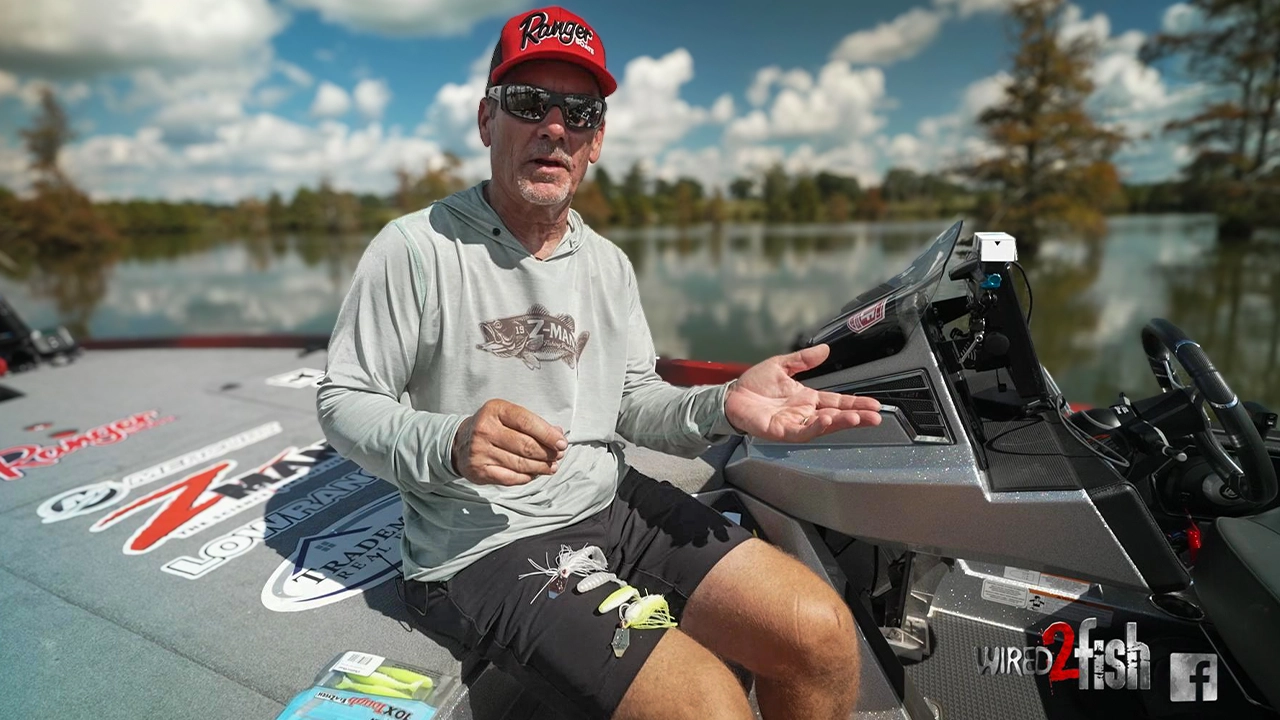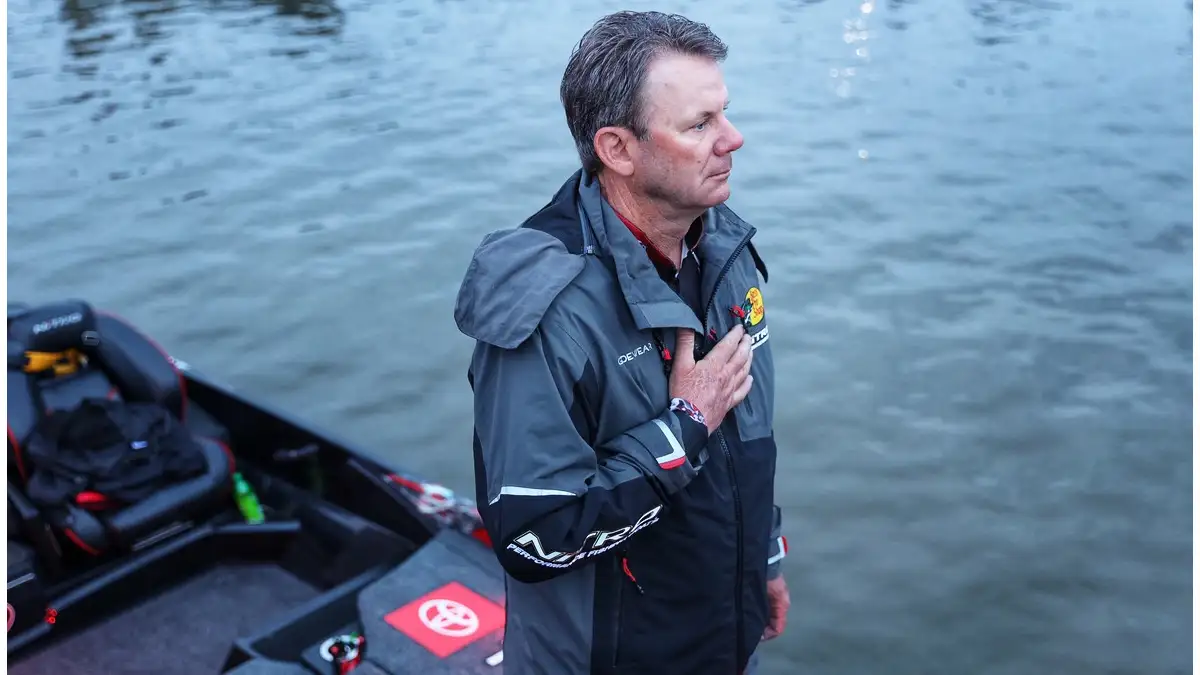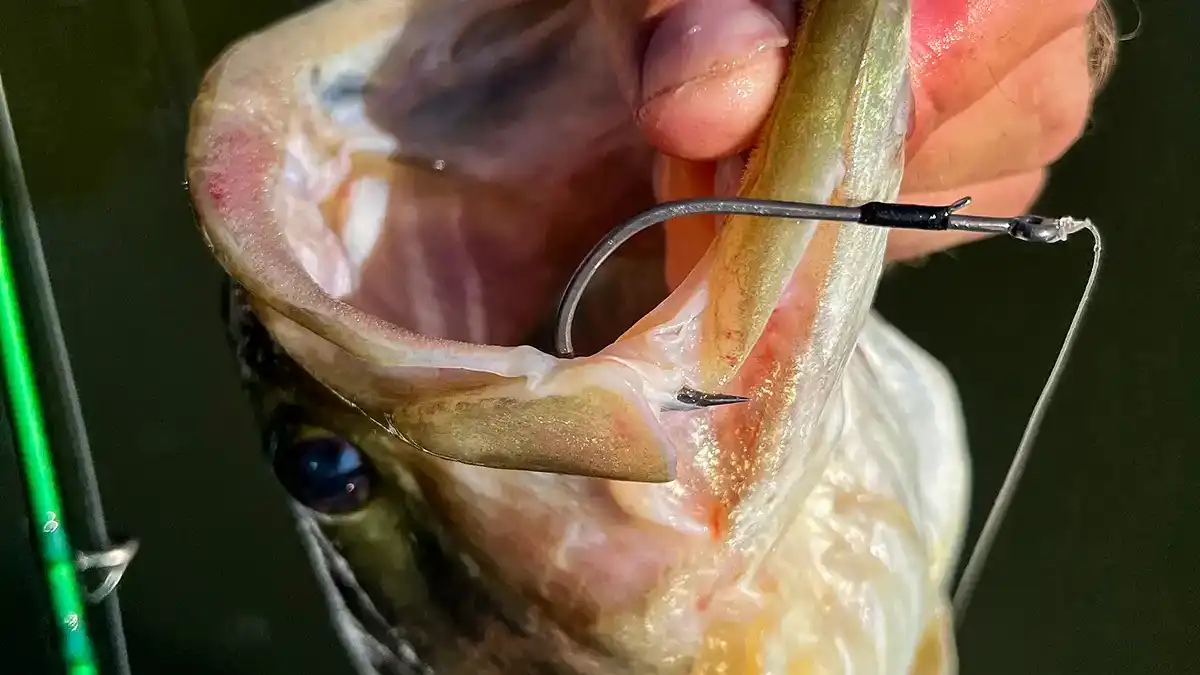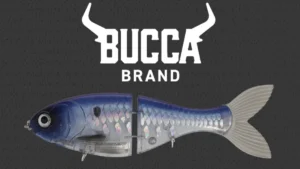Breaking your fishing line on a big fish is one of the most disheartening things in all of bass fishing, second only to breaking your line on a big one while using one of your favorite baits, I guess. But there are some things you can watch for to prevent this unwanted catastrophe from happening to you. Let’s talk about a few of them.
Check your line every chance you get
This may seem elementary to some of you, but regularly checking the last 4 to 5 feet of your line for abrasions is one of the best ways to prevent line breakage. This is because abrasions on that section of the line are one of the leading causes of fishing line failure.
If you’ve ever broken your line and then put the last few feet of line through your fingers, chances are it was pretty rough. Now this may have occurred on that exact cast because you got snagged on some rough cover. Or heck, maybe a fish fought you down into some cover for instance and the cover rubbed your line and broke it.
But often times, abrasions like this come several casts prior to the actual breakage. And if you take the time to feel your line every now and then, especially if you pull your bait out of some cover or feel like you might have rubbed the line across something rough on that cast, you’ll often feel a fray or abrasion on the line. Then simply cut your bait off, retie and you’re good to go.

Check your drag
Another seemingly obvious one to some, this one can sneak up on even the more experienced anglers. It’s easy for your fishing reel drag setting to get loosened or tightened when tossing your reel into the car or boat, since it’s controlled by the large star-shaped gear at your reel handle (top of the spool for spinning reels).
Making sure that your drag isn’t set too tightly for the line you’re using is critical when trying to avoid breaking your line. If you’ve got your drag set all the way tight and you hook a fish using 12-pound fluorocarbon, you’re likely going to snap your line. You want your drag to slip a little easier the lighter the line. With heavier braids and larger fluoro, you can tighten it down pretty tight, but even then you have to be careful around abrasive cover like wood and rocks.
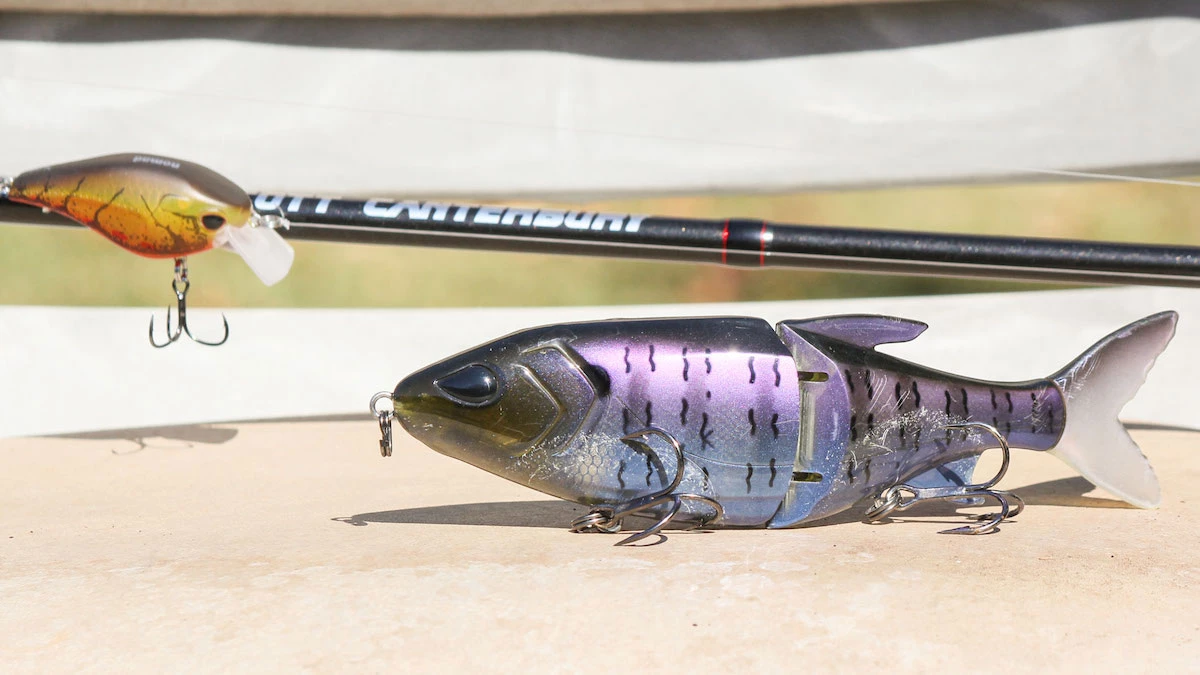
Don’t overpower your line with your rod or bait
This one is a little easier to do if you’re not careful. Even with your drag set correctly, using too large or stiff of a rod action with too light of line is a recipe for disaster. For instance, no one has any business using 12-pound test fluoro with a 7-foot 6-inch, heavy-action rod. The rod action is too stiff and would likely snap the line on the hookset, especially if a bass bites close to the boat.
Using a heavy bass fishing bait like a glide bait with light line is a no-no, too. What will sometimes happen here is the line will snap in your backcast as you load the rod up and then start to bring it forward. Or, what’s even worse, you’ll get the cast going and then the line will catch in your reel. Then the line will snap and the bait will sail on into the abyss, untethered to your rod. That’s no fun.
Make sure your knot game is solid
Your knot should be the strongest point in your line, not the weakest. But often times it’s the other way around. Learning how to tie, lubricate and cinch down the best bass fishing knots is absolutely critical when trying to avoid accidentally breaking your line.
A poorly tied knot that isn’t lubricated before it is cinched down will actually cut into itself, causing the line to break in the knot. You’re fortunate if this happens while you’re cinching the knot down and it often does. But it’s a real bummer when this happens on the hookset instead, which is the second-most likely moment for a line breakage to occur due to a bad knot.
When it comes to line breakage, there are some simple little things to pay attention to that can prevent a whole lot of heartache, but it takes dedication to detail. Make sure when you’re pairing your line, lure and rod, that you don’t overpower the line. Be sure to tie, lubricate and properly cinch down your knot when tying it. And don’t forget to check your drag often to make sure it’s not too tight or too loose.
The most important thing to look for is the most obvious and that is abrasions on your line. If you keep your guard up in these four areas, you can eliminate the vast majority of situations where line breakages are avoidable. Unfortunately, you’re still going to break your line sometimes. But following these simples tips will make it the rare unavoidable occurrence as opposed to a regular preventable headache.


